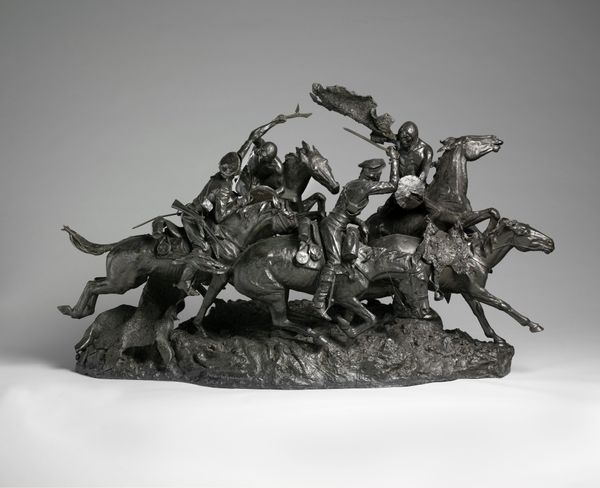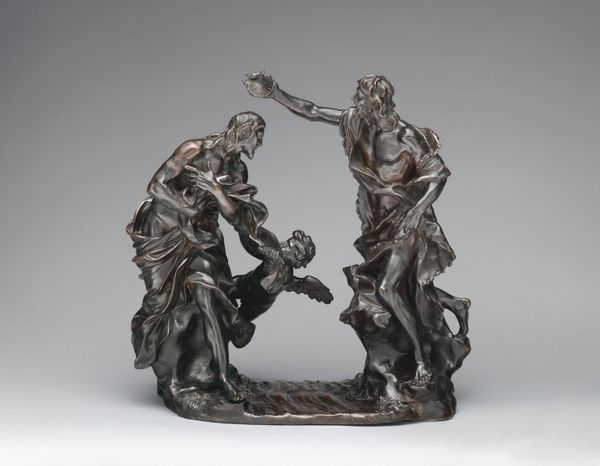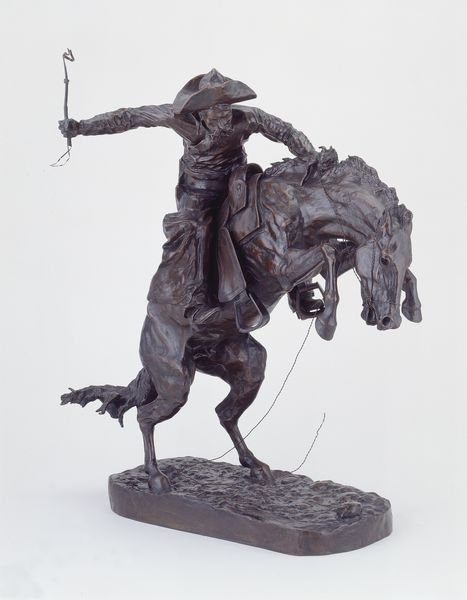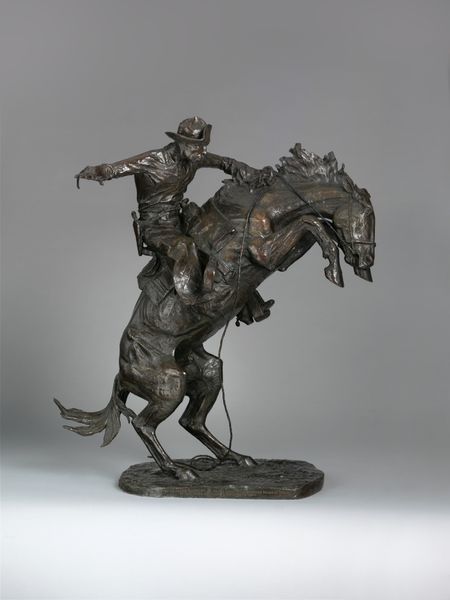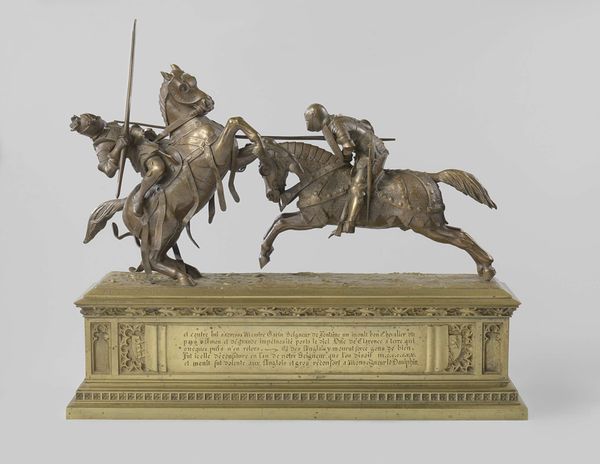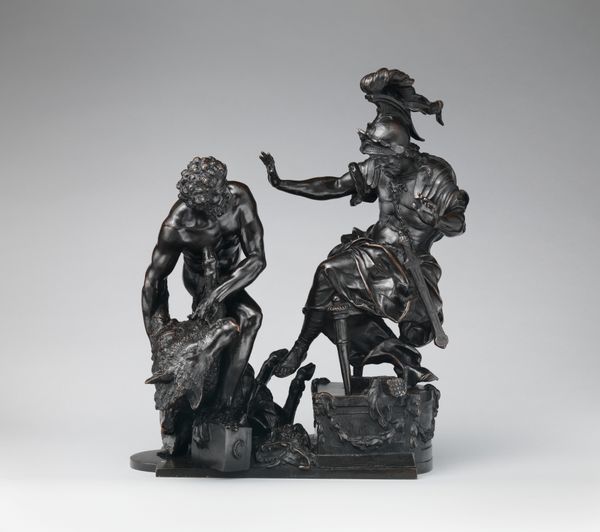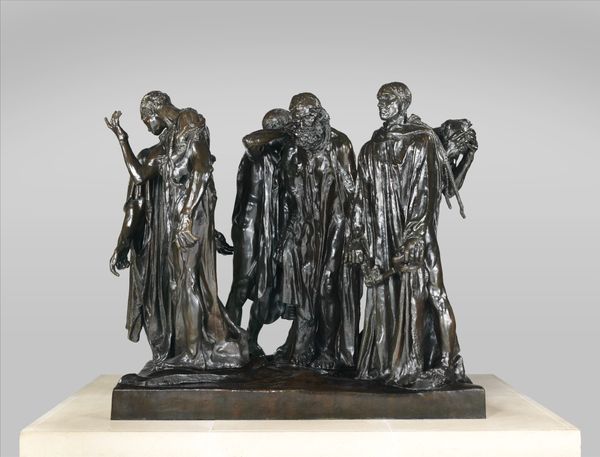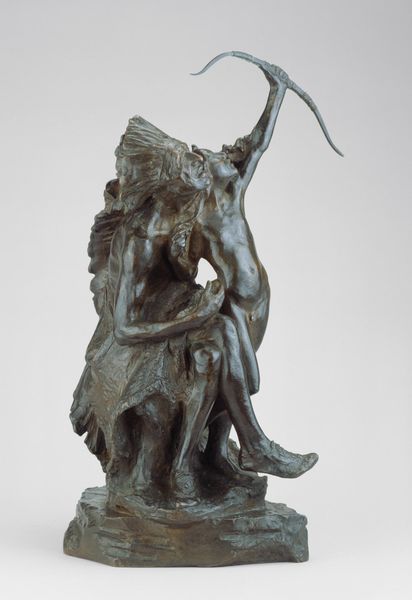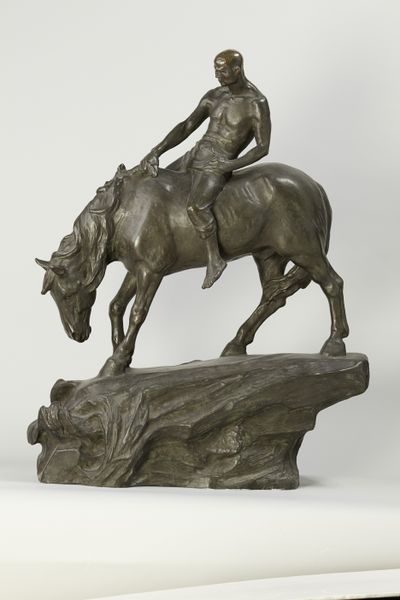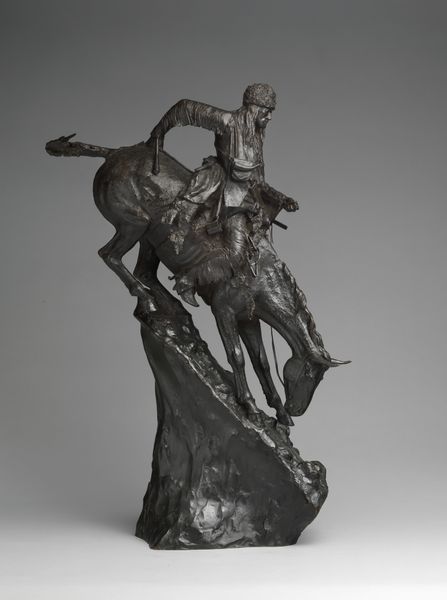
bronze, sculpture
#
animal
#
sculpture
#
bronze
#
figuration
#
sculpture
#
genre-painting
#
academic-art
Dimensions: 72.4 × 71.1 × 47 cm (28 1/2 × 28 × 18 1/2 in.)
Copyright: Public Domain
Editor: So here we have Frederic Remington’s "Coming Through the Rye (Over the Range)", dating to around 1902. It’s a bronze sculpture currently residing here at the Art Institute. The way these cowboys are portrayed, frozen in what looks like mid-celebration… it almost feels staged. How do you interpret this work? Curator: I'm drawn to the material itself, the bronze. Consider where this bronze came from, the mines and the labor involved in extracting it. What social and economic conditions made this sculpture possible? Remington wasn’t just crafting art; he was participating in a larger system of material extraction and capitalist expansion. Editor: That's a perspective I hadn’t considered. So, instead of focusing solely on the artistic merit, you are bringing the raw material to the forefront. But what about Remington's artistic intentions, isn't that important at all? Curator: Intentions are secondary. Look at the figures – their gestures, the detail in their clothing, the dynamism of the horses. This level of detail demanded highly skilled foundry workers, shaping the raw material. Their craftsmanship is essential to realizing Remington's vision. It highlights the intersection of artistry, skilled labor, and industrial processes. Think of it in terms of art, labor, and industrial advancement, not just the singular art of the sculptor. Editor: It sounds like the "cowboy" theme itself, in this case, is secondary. It's more about bronze's industrial roots and how it translates from the Earth to our eyes. Curator: Exactly. By interrogating its material existence, we get to see not just the depiction of westward expansion but also its material consequences, like extraction. We may consider if it is the story it is attempting to tell versus the other possible, and maybe conflicting stories, of the same object. Editor: It provides a completely different lens to consider! Focusing on how raw materials and skilled labor converge to produce what we see. Thank you. Curator: Indeed, now the question of labor of material meets cultural memory.
Comments
No comments
Be the first to comment and join the conversation on the ultimate creative platform.

